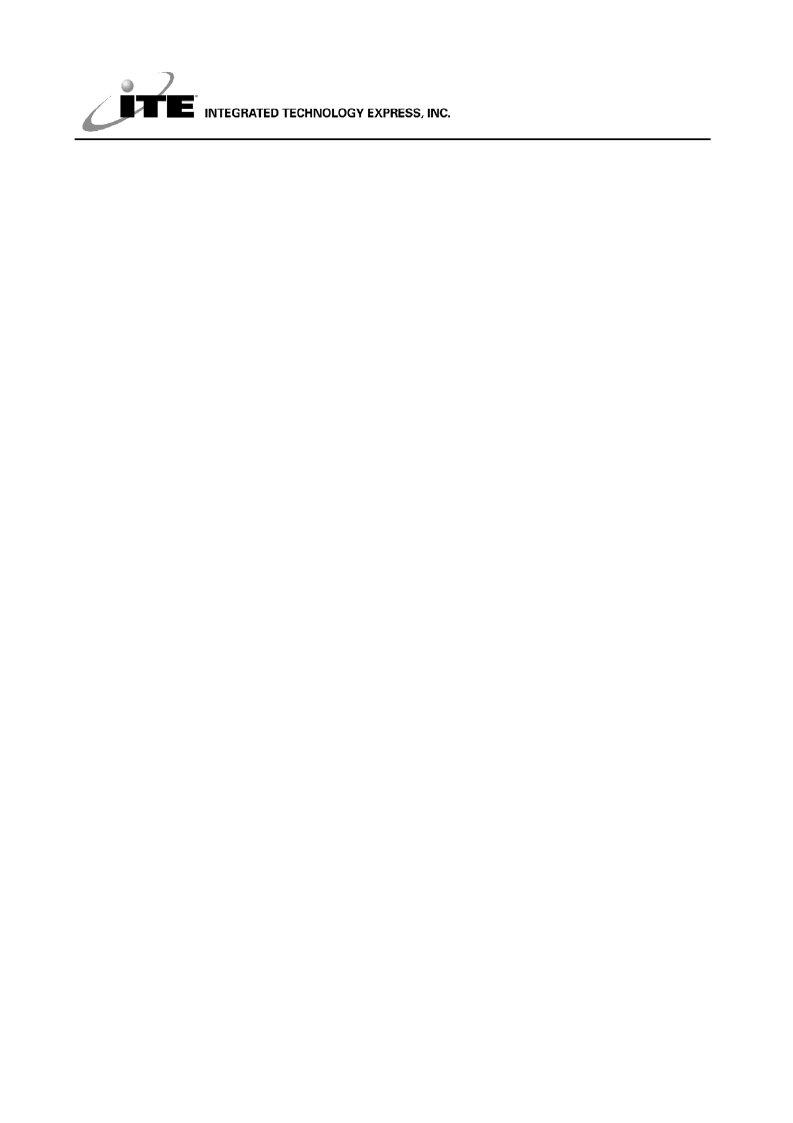- 您現(xiàn)在的位置:買(mǎi)賣(mài)IC網(wǎng) > PDF目錄383185 > IT8673F (Electronic Theatre Controls, Inc.) GT 35C 35#12 SKT PLUG PDF資料下載
參數(shù)資料
| 型號(hào): | IT8673F |
| 廠商: | Electronic Theatre Controls, Inc. |
| 英文描述: | GT 35C 35#12 SKT PLUG |
| 中文描述: | 先進(jìn)的輸入/輸出(高級(jí)I / O)的初步規(guī)范V0.5 |
| 文件頁(yè)數(shù): | 101/128頁(yè) |
| 文件大?。?/td> | 780K |
| 代理商: | IT8673F |
第1頁(yè)第2頁(yè)第3頁(yè)第4頁(yè)第5頁(yè)第6頁(yè)第7頁(yè)第8頁(yè)第9頁(yè)第10頁(yè)第11頁(yè)第12頁(yè)第13頁(yè)第14頁(yè)第15頁(yè)第16頁(yè)第17頁(yè)第18頁(yè)第19頁(yè)第20頁(yè)第21頁(yè)第22頁(yè)第23頁(yè)第24頁(yè)第25頁(yè)第26頁(yè)第27頁(yè)第28頁(yè)第29頁(yè)第30頁(yè)第31頁(yè)第32頁(yè)第33頁(yè)第34頁(yè)第35頁(yè)第36頁(yè)第37頁(yè)第38頁(yè)第39頁(yè)第40頁(yè)第41頁(yè)第42頁(yè)第43頁(yè)第44頁(yè)第45頁(yè)第46頁(yè)第47頁(yè)第48頁(yè)第49頁(yè)第50頁(yè)第51頁(yè)第52頁(yè)第53頁(yè)第54頁(yè)第55頁(yè)第56頁(yè)第57頁(yè)第58頁(yè)第59頁(yè)第60頁(yè)第61頁(yè)第62頁(yè)第63頁(yè)第64頁(yè)第65頁(yè)第66頁(yè)第67頁(yè)第68頁(yè)第69頁(yè)第70頁(yè)第71頁(yè)第72頁(yè)第73頁(yè)第74頁(yè)第75頁(yè)第76頁(yè)第77頁(yè)第78頁(yè)第79頁(yè)第80頁(yè)第81頁(yè)第82頁(yè)第83頁(yè)第84頁(yè)第85頁(yè)第86頁(yè)第87頁(yè)第88頁(yè)第89頁(yè)第90頁(yè)第91頁(yè)第92頁(yè)第93頁(yè)第94頁(yè)第95頁(yè)第96頁(yè)第97頁(yè)第98頁(yè)第99頁(yè)第100頁(yè)當(dāng)前第101頁(yè)第102頁(yè)第103頁(yè)第104頁(yè)第105頁(yè)第106頁(yè)第107頁(yè)第108頁(yè)第109頁(yè)第110頁(yè)第111頁(yè)第112頁(yè)第113頁(yè)第114頁(yè)第115頁(yè)第116頁(yè)第117頁(yè)第118頁(yè)第119頁(yè)第120頁(yè)第121頁(yè)第122頁(yè)第123頁(yè)第124頁(yè)第125頁(yè)第126頁(yè)第127頁(yè)第128頁(yè)

IT8673F
1
(6) Device Status Register (dsr) (Primary Base+1h, Mode All)
Bits 0, 1 and 2 of this register are not implemented. These bit states remain at high in a read operation of
Printer Status Register.
dsr(7):This bit is the inverted level of the Busy input.
dsr(6): This bit is the state of the nAck input.
dsr(5): This bit is the state of the PError input.
dsr(4): This bit is the state of the Select input.
dsr(3): This bit is the state of the nFault input.
dsr(2)-dsr(0): These bits are always 1.
(7) Device Control Register (dcr) (Primary Base+2h, Mode All)
Bits 6 and 7 of this register supply no function. They are set high during the read operation, and cannot be
written. Contents in bits 0-5 are initialized to 0 when the RESET pin is active.
dcr(7)-dcr(6) : These two bits are always high.
dcr(5) : Except in modes 000 and 010, setting this bit low means that the PD bus is in output operation;
setting it high, in input operation. This bit will be forced low in mode 000.
dcr(4): Setting this bit high enables the interrupt request from the peripheral to the host due to a rising edge
of the nAck input.
dcr(3): It is inverted and output to the pin nSelectIn.
dcr(2): It is output to the pin nInit without inversion.
dcr(1): It is inverted and output to the pin nAutoFd.
dcr(0): It is inverted and output to the pin nStrobe.
(8) Parallel Port Data FIFO (cFifo) (Secondary Base+0h, Mode 010)
Bytes written or DMA transferred from the Host to this FIFO are sent by a hardware handshaking to the
peripheral according to the standard parallel port protocol. This operation is only defined for the forward
direction.
(9) ECP Data FIFO (ecpDFifo) (Secondary Base+0h, Mode 011)
When the direction bit dcr(5) is 0, bytes written or DMA transferred from the Host to this FIFO are sent by a
hardware handshaking to the peripheral according to the ECP parallel port protocol. When the dcr(5) is 1,
data bytes from the peripheral to this FIFO are read in an automatic hardware handshaking. The Host can
acquire these bytes by performing read operations or DMA transfers from this FIFO.
(10) Test FIFO Mode (tFifo) (Secondary Base+0h, Mode 110)
The Host may operate
read/write
or DMA transfers to this FIFO in any direction. Data in this FIFO will be
displayed on the PD bus without using hardware protocol handshaking. The tFifo will not accept new data
after it is full. Performing a read operation from an empty tFifo causes the last data byte to return.
(11) Configuration Register A (cnfgA) (Secondary Base+0h, Mode 111)
This
read only
register indicates to the system that interrupts are ISA-Pulses. This is an 8-bit
implementation by returning a 10h.
相關(guān)PDF資料 |
PDF描述 |
|---|---|
| IT8687R | GT 35C 35#12 SKT PLUG |
| ITC1000 | GT 85C 85#16 SKT PLUG |
| ITF86130SK8T | N-Channel, Logic Level, Power MOSFET(N溝道邏輯電平功率MOS場(chǎng)效應(yīng)管) |
| ITF86182SK8T | 11A, 30V, 0.0115 Ohm, P-Channel, Logic Level, Power MOSFET |
| ITF87012SVT | 6A, 20V, 0.035 Ohm, N-Channel,2.5V Specified Power MOSFET(6A, 20V, 0.035Ω N溝道2.5V專(zhuān)用功率MOS場(chǎng)效應(yīng)管) |
相關(guān)代理商/技術(shù)參數(shù) |
參數(shù)描述 |
|---|---|
| IT8687R | 制造商:ITE 功能描述: |
| IT86B | 制造商:未知廠家 制造商全稱(chēng):未知廠家 功能描述:TRIAC|600V V(DRM)|8A I(T)RMS|TO-220 |
| IT86C | 制造商:未知廠家 制造商全稱(chēng):未知廠家 功能描述:TRIAC|600V V(DRM)|8A I(T)RMS|TO-220 |
| IT86F | 制造商:未知廠家 制造商全稱(chēng):未知廠家 功能描述:TRIAC|600V V(DRM)|8A I(T)RMS|TO-220 |
| IT86G | 制造商:未知廠家 制造商全稱(chēng):未知廠家 功能描述:TRIAC|600V V(DRM)|8A I(T)RMS|TO-220 |
發(fā)布緊急采購(gòu),3分鐘左右您將得到回復(fù)。